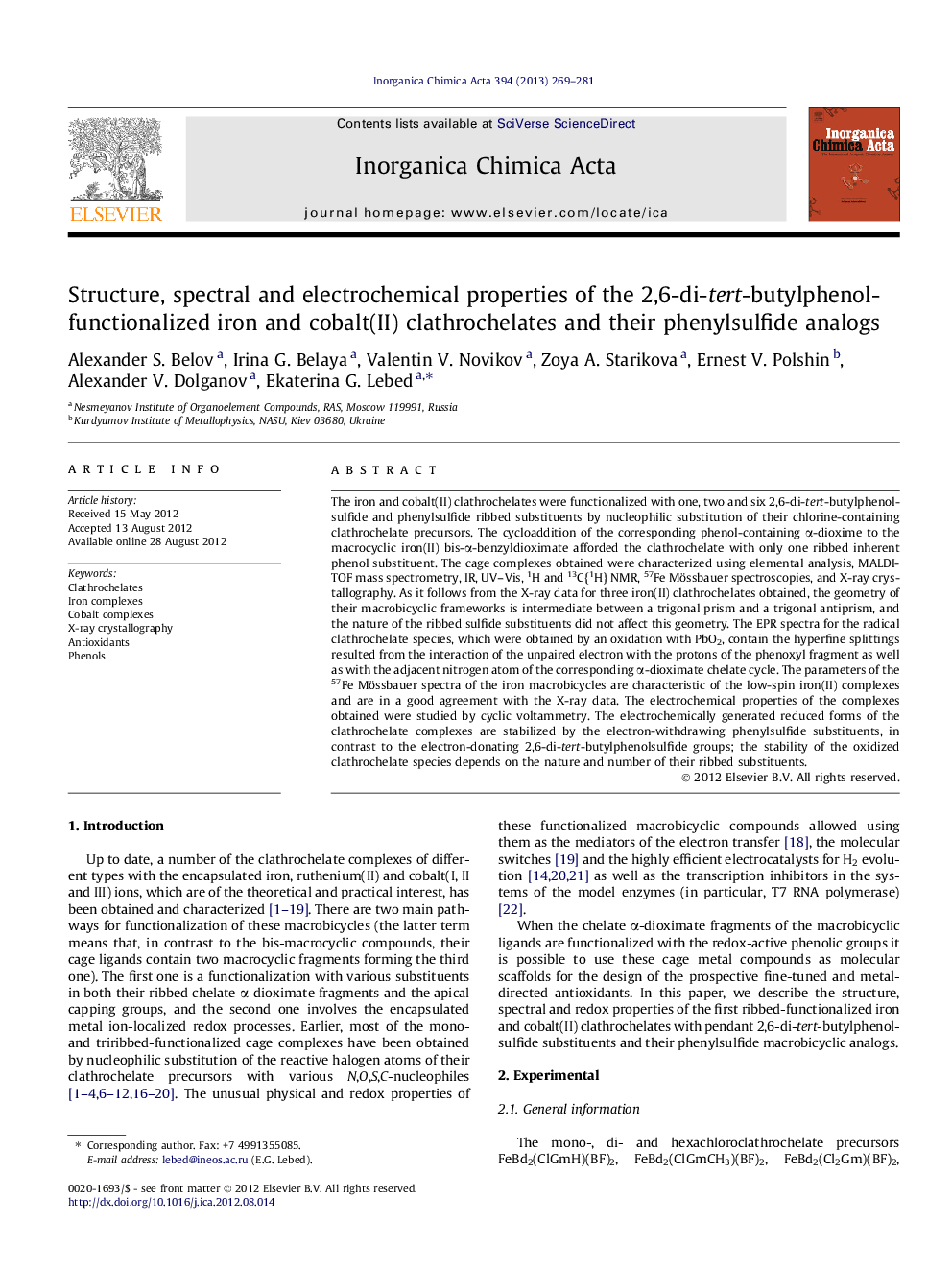| کد مقاله | کد نشریه | سال انتشار | مقاله انگلیسی | نسخه تمام متن |
|---|---|---|---|---|
| 1310587 | 1499193 | 2013 | 13 صفحه PDF | دانلود رایگان |

The iron and cobalt(II) clathrochelates were functionalized with one, two and six 2,6-di-tert-butylphenolsulfide and phenylsulfide ribbed substituents by nucleophilic substitution of their chlorine-containing clathrochelate precursors. The cycloaddition of the corresponding phenol-containing α-dioxime to the macrocyclic iron(II) bis-α-benzyldioximate afforded the clathrochelate with only one ribbed inherent phenol substituent. The cage complexes obtained were characterized using elemental analysis, MALDI-TOF mass spectrometry, IR, UV–Vis, 1H and 13C{1H} NMR, 57Fe Mössbauer spectroscopies, and X-ray crystallography. As it follows from the X-ray data for three iron(II) clathrochelates obtained, the geometry of their macrobicyclic frameworks is intermediate between a trigonal prism and a trigonal antiprism, and the nature of the ribbed sulfide substituents did not affect this geometry. The EPR spectra for the radical clathrochelate species, which were obtained by an oxidation with PbO2, contain the hyperfine splittings resulted from the interaction of the unpaired electron with the protons of the phenoxyl fragment as well as with the adjacent nitrogen atom of the corresponding α-dioximate chelate cycle. The parameters of the 57Fe Mössbauer spectra of the iron macrobicycles are characteristic of the low-spin iron(II) complexes and are in a good agreement with the X-ray data. The electrochemical properties of the complexes obtained were studied by cyclic voltammetry. The electrochemically generated reduced forms of the clathrochelate complexes are stabilized by the electron-withdrawing phenylsulfide substituents, in contrast to the electron-donating 2,6-di-tert-butylphenolsulfide groups; the stability of the oxidized clathrochelate species depends on the nature and number of their ribbed substituents.
The ribbed-functionalized iron and cobalt(II) cage complexes with pendant 2,6-di-tert-butylphenol-containing sulfide substituents and their phenylsulfide macrobicyclic analogs were obtained by nucleophilic substitution of the reactive chlorine atoms of the mono-, di- and hexachloroclathrochelate precursors with corresponding thiolate ions.Figure optionsDownload as PowerPoint slideHighlights
► Nucleophilic substitution with mercaptophenol gave phenol Fe(Co)(II) clathrochelates.
► Nucleophilic substitution with thiophenol afforded phenylsulfide clathrochelates.
► Cycloaddition of phenol-containing α-dioxime gave monophenol iron(II) clathrochelate.
► Reduced clathrochelates are stabilized by electron-withdrawing phenylsulfide groups.
► Reduced clathrochelates are destabilized by electron-donating phenolsulfide groups.
Journal: Inorganica Chimica Acta - Volume 394, 1 January 2013, Pages 269–281